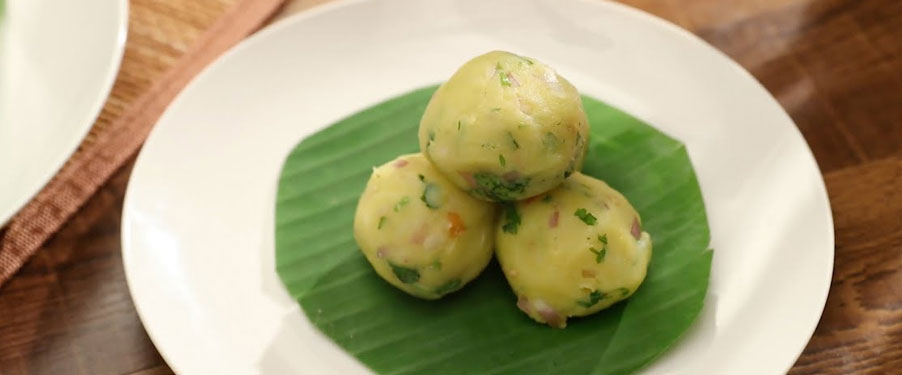A Foodie’s Guide to Traditional Assamese Dishes during Manas Wildlife Adventure
By JAGAT [07-Feb-25] A trip to Manas National Park offers more than just a glimpse of Assam’s rich biodiversity, it’s also a gateway to experiencing the state’s vibrant culinary heritage. Assamese cuisine is rooted in tradition, with flavours that reflect the natural abundance of the land. Exploring Manas is incomplete without indulging in local delicacies that showcase Assam’s cultural richness. Savour the tangy Masor Tenga, Aloo Pitika, and the iconic Khar. Don’t miss out on the smoky goodness of Duck Curry paired with Ash Gourd. Beyond its cuisine, Assam is renowned for its lush landscapes, the mighty Brahmaputra River, and scenic Nilgiri Hills. As you wander through this natural paradise, take in Assam’s cultural treasures, such as its world-famous tea, carefully cultivated by local farmers and vibrant silk markets. The simplicity of ingredients and subtle yet bold flavours in Assamese food reflect the state’s diverse cultural heritage. This guide will help you discover the must-try traditional dishes, turning your Manas wildlife adventure into a flavourful and memorable journey through Assam’s culinary wonders.

About Manas National Park
Manas is a UNESCO World Heritage Site popular for Indian one-horned rhinoceros. While the most popular Kaziranga National Park remains full of tourists almost throughout the tourist season, Manas National Park is comparatively less crowded. However, the safaris conducted in Manas are equally thrilling and full of wildlife sightings. Both the jeep and the elephant safaris in Manas National Park facilitate exotic wildlife sightings providing a lifetime experience. The elephant safaris are operated in the morning hours of the day when the forest is wrapped with tranquillity. The jeep safaris in Manas are scheduled in the morning and evening slots, which take you deep inside the forest ensuring the highest chances to spot wildlife. While planning a trip to Manas, the sole focus stick on the planning and slot booking for the Manas safari. Whereas, apart from the safari booking procedure, you also need to think about the accommodation and food enthusiasts also look for some authentic restaurants serving the traditional delectable cuisines of Assam.
Treat Your Taste Buds Along with Visionary Treat of Encountering Wild Animals
Duck Meat Curry - Duck meat holds a special place in Assamese cuisine and is often a highlight during festive occasions or special gatherings. It is prepared in a variety of ways, with duck curry paired with ash gourd being a popular choice. However, the cuisine offers many other flavorful options, such as duck cooked with lentils, sesame seeds, or pumpkin.
Aloo Pitika - Aloo Pitika is a beloved dish in Assam that adds a comforting touch to any rice and dal meal. Its widespread popularity across the region stems from its simplicity and fulfilling taste. Made by mashing potatoes with fragrant mustard oil, onions, coriander and salt, this dish offers a burst of flavour with every bite. Suitable for both lunch and dinner, Assamese take aloo pitika highlights the simplicity and wholesome nature of the local cuisine, delivering a true sense of comfort and warmth.
Masor Tenga - Masor Tenga is a tangy fish curry that holds a special place in the region’s cuisine. The term “Tenga” translates to “sour,” and this distinctive flavor is often achieved with ingredients such as tomatoes, lemon, dried mangosteen, raw mango, or elephant apple. This light and sour dish pairs perfectly with rice for lunch or dinner, making it both refreshing and easy to digest after a hearty meal. Masor Tenga is typically prepared with mild spices and can be enhanced by tempering agents like fenugreek, panch phoran, or mustard seeds.
Paror Mangxo - A delicacy for meat enthusiasts, pigeon meat holds a special place in Assamese cuisine, especially during the colder months when it’s enjoyed for its warming properties. One of the most popular preparations pairs pigeon meat with koldil (banana flower). The tender, flavorful meat beautifully complements the unique texture of finely chopped banana flowers, creating a harmonious blend of flavors.
Khar - Khar is a traditional Assamese preparation made using the ashes of burnt banana peel or banana tree stems. It is often combined with ingredients like raw bananas or lentils to create flavorful dishes. Beyond its culinary significance, Khar is also believed to offer health benefits due to its stomach-cleansing properties.
